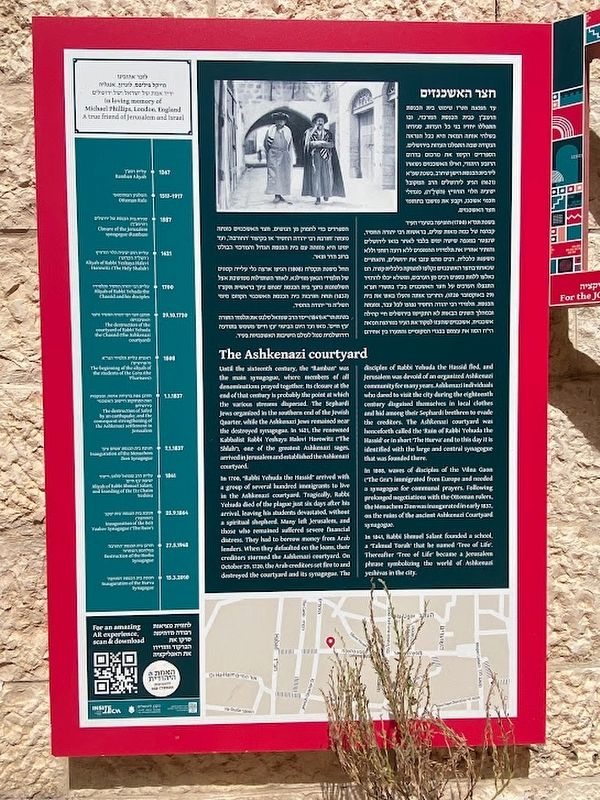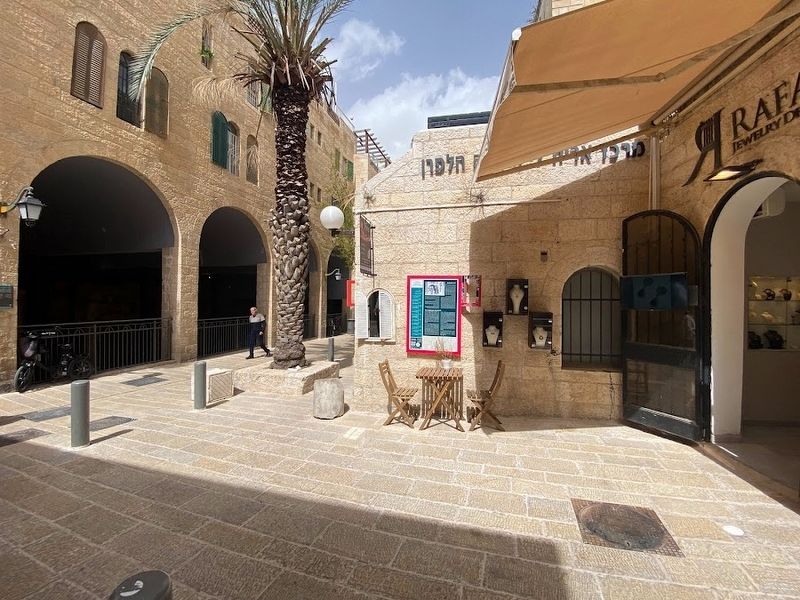The Jewish Quarter in Jerusalem, Jerusalem District, Israel — The Middle East (West Asia)
The Ashkenazi courtyard
In 1700, "Rabbi Yehuda the Hassid" arrived with a group of several hundred immigrants to live in the Ashkenazi courtyard. Tragically, Rabbi Yehuda died of the plague just six days after his arrival, leaving his students devastated, without a spiritual shepherd. Many left Jerusalem, and those who remained suffered severe financial distress. They had to borrow money from Arab lenders. When they defaulted on the loans, their creditors stormed the Ashkenazi courtyard. On October 29, 1720, the Arab creditors set fire to and destroyed the courtyard and its synagogue. The disciples of Rabbi Yehuda the Hassid fled, and Jerusalem was devoid of an organized Ashkenazi community for many years. Ashkenazi individuals who dared to visit the city during the eighteenth century disguised themselves in local clothes and hid among their Sephardi brethren to evade the creditors. The Ashkenazi courtyard was henceforth called the 'Ruin of Rabbi Yehuda the Hassid' or in short 'The Hurva' and to this day it is identified with the large and central synagogue that was founded there.
In 1808, waves of disciples of the Vilna Gaon ("The Gra") immigrated from Europe and needed a synagogue for communal prayers. Following prolonged negotiations with the Ottoman rulers, the Menachem Zion was inaugurated in early 1837, on the ruins of the ancient Ashkenazi Courtyard synagogue.
In 1841, Rabbi Shmuel Salant founded a school, a 'Talmud Torah' that he named 'Tree of Life' became a Jerusalem phrase sybolizing the world of Ashkenazi yeshivas in the city.
(Hebrew text not transcribed)
Topics. This historical marker is listed in these topic lists: Churches & Religion • Settlements & Settlers. A significant historical date for this entry is October 29, 1720.
Location. 31° 46.534′ N, 35° 13.867′ E. Marker is in Jerusalem, Jerusalem District. It is in The Jewish Quarter. Marker is on Ha-Yehudim Street, on the left when traveling south. Touch for map. Marker is at or near this postal address: Ha-Yehudim St 87, Jerusalem, Jerusalem District, Israel. Touch for directions.
Other nearby markers. At least 8 other markers are within walking distance of this marker. Female Entrepreneurship in the Jewish Quarter (here, next to this marker); Memorial Room Commemorating the Victims of the Jewish Quarter (a few steps from this marker); The Hurva Synagogue (a few steps from this marker); Moshe Rusnak Plaza (within shouting distance of this marker in Israel); Western Cardo (within shouting distance of this marker); a different marker also named Western Cardo (within shouting distance of this marker); Jerusalem's Architectural Tradition (within shouting distance of this marker in Israel); Architectural elements from the Jewish Quarter (within shouting distance of this marker in Israel). Touch for a list and map of all markers in Jerusalem.
Credits. This page was last revised on March 31, 2023. It was originally submitted on March 29, 2023, by Darren Jefferson Clay of Duluth, Georgia. This page has been viewed 68 times since then and 23 times this year. Photos: 1, 2. submitted on March 29, 2023, by Darren Jefferson Clay of Duluth, Georgia. • Andrew Ruppenstein was the editor who published this page.

